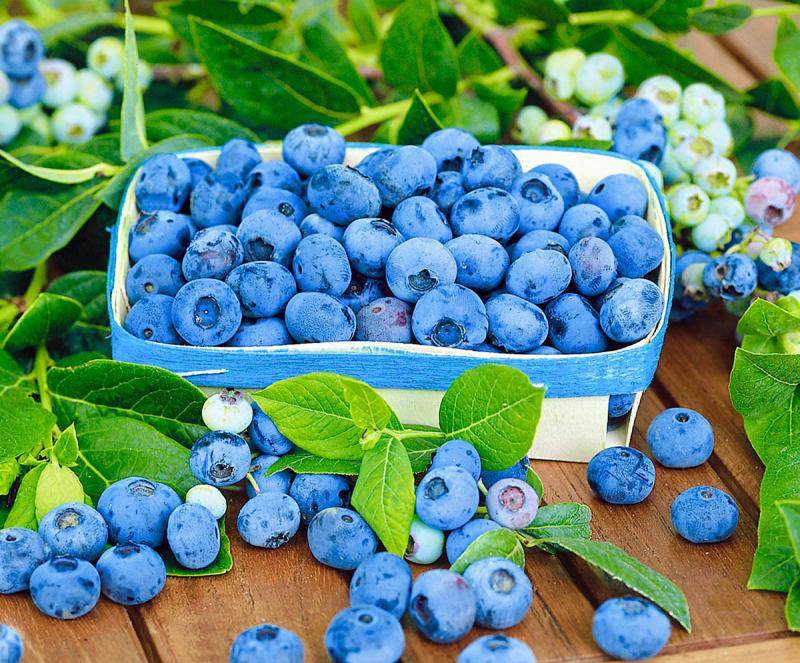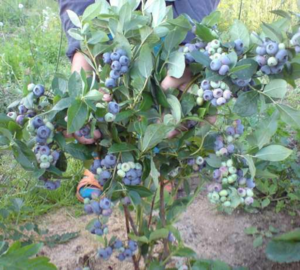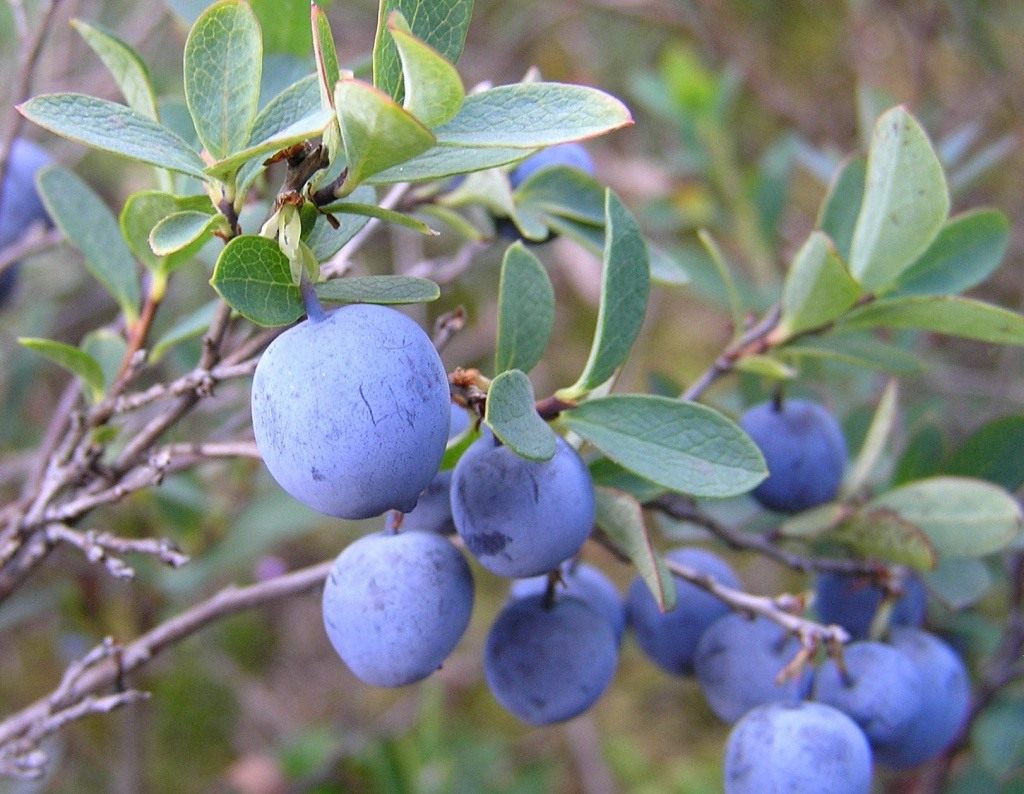 Dark blue, almost black, covered with a light whitish bloom, juicy, sweet and sour blueberries are loved by many, they have many useful properties that affect the functioning of the internal organs of the whole body. It is the fresh berry, which contains the greatest amount of vitamins and important microelements, that is appreciated by nutritionists all over the world.
Dark blue, almost black, covered with a light whitish bloom, juicy, sweet and sour blueberries are loved by many, they have many useful properties that affect the functioning of the internal organs of the whole body. It is the fresh berry, which contains the greatest amount of vitamins and important microelements, that is appreciated by nutritionists all over the world.
Blueberries protect the heart and blood vessels, regulate the work of the pancreas and intestines, significantly slow down the aging of nerve cells, and, consequently, the cerebral cortex, restore vision, enhance the medicinal properties of drugs, accelerate metabolism and lowers blood sugar.
In addition, berries can reduce the risk from radioactive radiation, are useful for hypertension, rheumatism, atherosclerosis, are rich in antioxidants, which can reduce the risk of cancer, and are able to support and activate the vitality of even an elderly organism. Not only berries are considered useful, but also blueberry leaves. Their broth is recommended to be taken in case of heart disease.
It is not surprising that many today want to plant this miracle berry on their plots. Unfortunately, forest blueberries cannot be domesticated, but a huge variety of domestic varieties are available for gardeners, whose seedlings can be purchased in stores and planted on their site. Perhaps, garden varieties of berries are not as rich in vitamins as their forest cousins, but they give more harvest, larger berries and resistant to many types of diseases and pests. Of course, this does not mean that blueberries do not need care. Blueberry cultivation is not for the lazy, their bushes are whimsical and require proper planting and careful, diligent supervision.
Content
Advantages and differences between garden varieties and wild blueberries
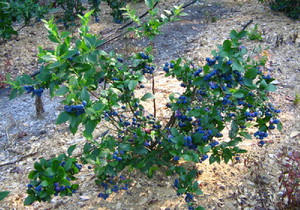 As we said, garden blueberries contain fewer vitamins than wild berries. But the difference between them is minimal, according to studies comparing different varieties of these berries, their basic chemical composition is the same.
As we said, garden blueberries contain fewer vitamins than wild berries. But the difference between them is minimal, according to studies comparing different varieties of these berries, their basic chemical composition is the same.- Of course, all garden varieties have large, fleshy berries, which are extremely rare in nature. Also, unlike wild bushes, summer cottages give a much higher yield, their stems are abundantly covered with pale blue berries.
- The garden blueberry bush is much higher than the wild one and is able to bear fruit already in the second or third year after planting in the ground. In nature, this is impossible, because wild varieties begin to bear fruit no earlier than the fifteenth year after long growth, strengthening and development.
Garden blueberry varieties
To date, breeders have bred a huge variety of blueberry varieties, different in their qualities and characteristics. Let's consider the most popular ones.
Swamp or marsh
Wild blueberries can be found in any region of the northern hemisphere; in Russia it most often grows in the Far East, the Urals and Siberia. Swamp blueberry is very unpretentious, likes a mild cold climate and grows in the tundra, in peat bogs and swamps, often in swampy forests and along streams. The height of the bushes is usually no more than 30 cm, can bear fruit up to 80-100 years, but the first, rare berries give only at 11-18 years.
Early varieties
You can enjoy the berries of these varieties already in the middle of summer.
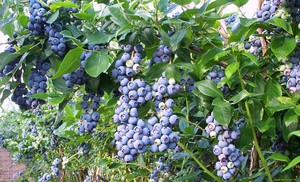 Blueberry Duke (Duke) gives a high yield with very large beautiful light blue berries up to 17mm in diameter. But the berries have a mild taste, which only slightly improves after cooling, poorly transported and stored. The variety does not tolerate very moist soil.
Blueberry Duke (Duke) gives a high yield with very large beautiful light blue berries up to 17mm in diameter. But the berries have a mild taste, which only slightly improves after cooling, poorly transported and stored. The variety does not tolerate very moist soil.- Stanley (Stanley) produces large light blue berries that do not crack after ripening and have a bright taste, but not more than 5 kg. from the bush.
- Erliblu (Earliblue) has a high yield, producing up to 7kg. from a bush, but the taste of the berries is not pronounced and transportation will cause a lot of trouble due to poor storage of the crop.
Mid-season varieties
They delight gardeners with the harvest by the end of July.
- Elizabeth (Elizabeth) this variety will provide you with excellent yield (up to 6 kg per bush), very fragrant, tasty and very large berries (up to 16 mm), but it bears fruit only from August 1, therefore, the fruits will not have time to ripen in cold, wet summer.
- Patriot (Patriot) will provide you with large (up to 19mm) light blue berries from July 21st, but they don't taste good enough.
- Blues (Bluejay). An excellent variety with no flaws. Powerful tall bush from mid-July bears abundant fruit with medium, but very dense, non-cracking berries with a pleasant taste. An additional bonus - the bush has a high yield (up to 6 kg) and the berries are well transported.
Late blueberry varieties
They delight gardeners with a harvest by the end of August and the beginning of September.
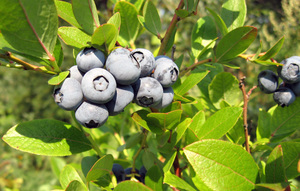 Eliot (Elliot) small to medium-sized berries of this variety have a soft, delicate, pleasant aroma, are strong enough and cover the bush quite abundantly, but the bush itself does not tolerate winter well.
Eliot (Elliot) small to medium-sized berries of this variety have a soft, delicate, pleasant aroma, are strong enough and cover the bush quite abundantly, but the bush itself does not tolerate winter well.- Ivanhoe (Ivanhoe) Powerful tall shrub, very abundantly covered with large, dense berries with good aroma and taste. But due to the characteristics of their variety, the bushes may produce crops irregularly.
- Jersey (Jersey) The winter-hardy bush gives a rich harvest (up to 6 kg) from dense, very tasty berries of good quality, which, moreover, are not compressed, which provides their owner with excellent conditions for storage and transportation. Of the minuses, perhaps, one can only name the insufficiently large size of the berries, but this pales in comparison with their merits.
Ideal blueberry varieties for planting in various fields
Before purchasing your favorite garden blueberry variety, you need to familiarize yourself with its advantages and disadvantages, because different varieties are suitable for different climatic features of a particular area. There are blueberry varieties that bring a good harvest and are unpretentious to the atmosphere and growing environment, and there are very delicate varieties that do not tolerate sudden temperature changes.
The main factor in choosing a particular blueberry variety should be climatic features of your region.
In the harsh climate of Siberia and the Urals, it is advisable to plant stable, low varieties, which, due to their small stature, easily survive frosts under a snow crust. Taller bushes should be bent to the ground and covered for the winter. In the harsh northern climate, Isakievskaya, Divnaya and Yurkovskaya blueberries take root and bear fruit well.
In the warm suburbs, it is recommended to plant American varieties, such as Bluecrop, Northland, Patriot. Tall bushes with early berries thrive in this climate.
Planting and leaving
Soil preparation
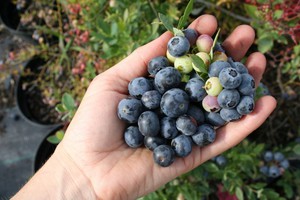 For planting blueberries, first of all find a suitable sunny placesecurely protected from the wind. Pay special attention to lighting: if the bush is planted in the shade, your crop will be small, tasteless and few in number. Conduct an examination of the soil to find out the level of its acidity - blueberries grow only in acidic soil. The ideal acidity index is pH 3.5-4.5. Also, the plot on which you are going to grow blueberries must be absolutely fresh, never before cultivated. At least, the land before planting should spend several years "fallow".
For planting blueberries, first of all find a suitable sunny placesecurely protected from the wind. Pay special attention to lighting: if the bush is planted in the shade, your crop will be small, tasteless and few in number. Conduct an examination of the soil to find out the level of its acidity - blueberries grow only in acidic soil. The ideal acidity index is pH 3.5-4.5. Also, the plot on which you are going to grow blueberries must be absolutely fresh, never before cultivated. At least, the land before planting should spend several years "fallow".
Time of year for planting
Planting blueberries in the ground possible in spring and autumn, but a seedling planted in the spring manages to get stronger over the summer, so it will be easier for it to endure wintering.
Spring planting
It is necessary to plant blueberries in the ground before the buds have time to swell. When choosing a seedling, give preference to those sold in pots or containers. Before planting, immerse the pot in a deep container of water for half an hour, take out the seedling and very delicately try to straighten the roots and clean them of the store soil.
For planting seedlings, dig holes in a suitable area half a meter deep at a distance of half a meter from each other (for low-growing varieties), or a meter (for tall ones). Loosen the bottom of the holes and create acidic conditions in them so that the blueberries can grow comfortably in the soil. For this put peat mixed with pine needles on the bottom, sawdust and add 50 gr. sulfur, mix the entire substrate thoroughly and compact. Now place a seedling in the hole, gently spread the roots to it and cover with earth, water and cover with a mixture of coniferous sawdust and peat.
After planting, the seedlings are watered every 2 weeks, enriching every 5 liters of water with 20 grams. citric acid or apple cider vinegar.
Autumn landing
Autumn landing completely repeats all actions from the previous paragraph. But after planting in a one-year-old seedling, it is necessary to remove all weak and weak branches with the help of a secateurs, and all strong branches must be shortened in half. Please note that pruning is not performed on two-year-old seedlings.
Garden blueberry care
 Any foreign plants near the blueberry bush clog the micropores in the soil, which provide nutrition to the root system. Therefore, the main rule for a summer resident who decides to start breeding blueberries is frequent and regular weeding with the removal of all weeds. In addition, maintenance includes loosening the soil several times during the season. Since the main part of blueberry roots develops at a depth of 20 cm, loosening is carried out no deeper than 10 cm.
Any foreign plants near the blueberry bush clog the micropores in the soil, which provide nutrition to the root system. Therefore, the main rule for a summer resident who decides to start breeding blueberries is frequent and regular weeding with the removal of all weeds. In addition, maintenance includes loosening the soil several times during the season. Since the main part of blueberry roots develops at a depth of 20 cm, loosening is carried out no deeper than 10 cm.
Even in rainy weather, watering is carried out every 2 weeks, and in the heat, in the morning and in the evening, while there is no burning sun rays, the bush is additionally sprayed with warm water. Watering is carried out 2 times a day - in the morning and in the evening a bucket of water per bush... Do not neglect these responsibilities, because the speed of development and growth of culture depends on water.
Blueberry propagation is possible in three main ways:
- Sowing seeds is the longest and most painstaking way, in which a full harvest can be expected for 10 years
- Vegetative. One of the branches is bent to the soil and covered with earth to form a root system.
- Propagation by cuttings. As a rule, the cuttings are branches left after the planned pruning of the shrub.
Top dressing
Blueberries are very unpretentious and picky, but reacts to feeding with gratitude. Fertilizers should be introduced at the beginning of spring, when the buds begin to swell and the movement of juices is activated. Top dressing is carried out only with mineral fertilizers with an acid reaction, organic matter for blueberries is destructive. The best mineral fertilizers that are assimilated by blueberries and contribute to their growth and development - superphosphate, ammonium sulfate, zinc sulfate, potassium sulfate, magnesium sulfate.All nitrogen fertilizers (ammonium sulfate) are introduced in 3 phases: during the period of soil swelling, in early May and early June. The older the bush, the more fertilizer it needs.
Blueberries will tell you what kind of feeding they need. So, if her leaves turn red in the spring, she needs phosphates, and if the foliage has become shallow and faded, the bush is fertilized with nitrogen, the blackening of the upper leaves indicates a lack of potassium in the soil, and yellowing indicates a lack of boron.
Pruning and preparing for the winter
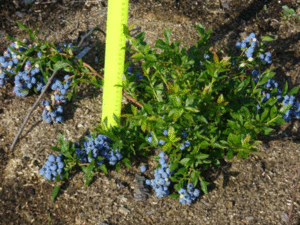 In order to feast on tender juicy blueberries every year, in the spring, even before the buds swell, the bush must be cut off. However, suspicious and diseased branches can and should be cut both in summer and autumn. Remove flowers from first-year bushes. So that young bushes during fruiting do not break under the weight of their rich harvest, in bushes at the age of 2-4 years branches are necessarily cut in the spring, this is how you can achieve a durable and strong plant skeleton. In bushes over the age of four, all branches older than five years are removed.
In order to feast on tender juicy blueberries every year, in the spring, even before the buds swell, the bush must be cut off. However, suspicious and diseased branches can and should be cut both in summer and autumn. Remove flowers from first-year bushes. So that young bushes during fruiting do not break under the weight of their rich harvest, in bushes at the age of 2-4 years branches are necessarily cut in the spring, this is how you can achieve a durable and strong plant skeleton. In bushes over the age of four, all branches older than five years are removed.
Growing blueberries in the Moscow region
When choosing a variety for a dacha near Moscow, pay attention to tall species that grow easily under adverse conditions and give a generous, bountiful harvest of sweet and dense berries. American varieties of garden blueberries are optimal for the climate near Moscow. If there is an apiary with bees near the dacha, give preference to non-hybrid species of American blueberry varieties - after pollination they give a richer and larger harvest.
Also, the advantage of these varieties is that after the berries ripen, they are able to keep them ripe on the branches for up to three weeks.
In favor of these varieties in the climate of the Moscow region is also evidenced by the fact that they are able to withstand low temperatures under snow cover. Of course, before the onset of cold weather, the branches should be lowered to the ground and covered.
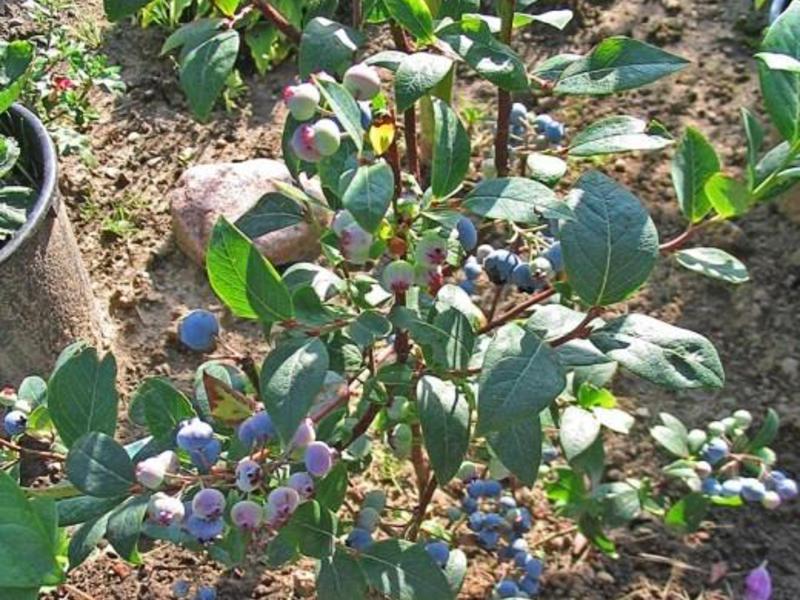

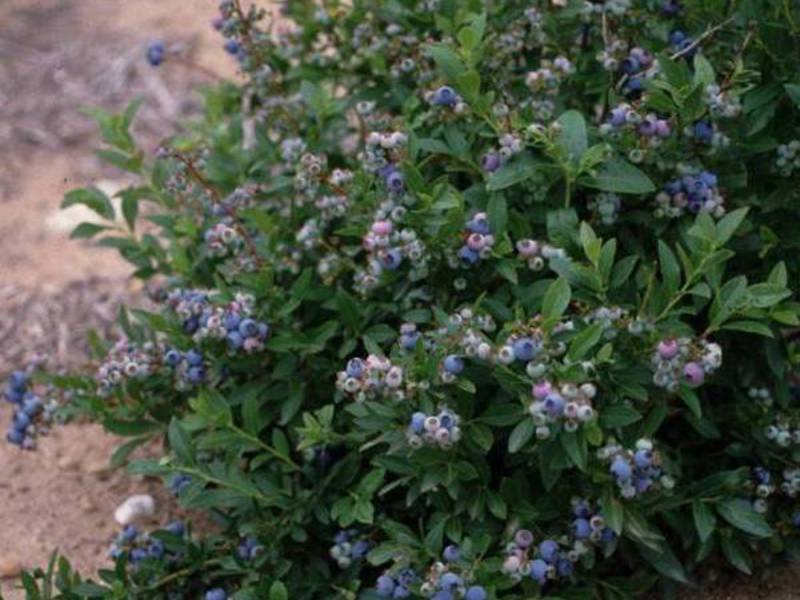
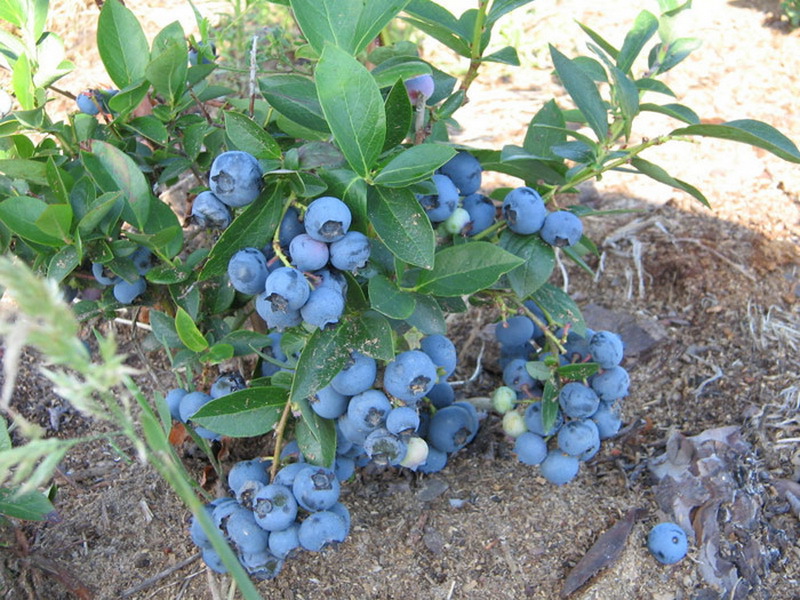

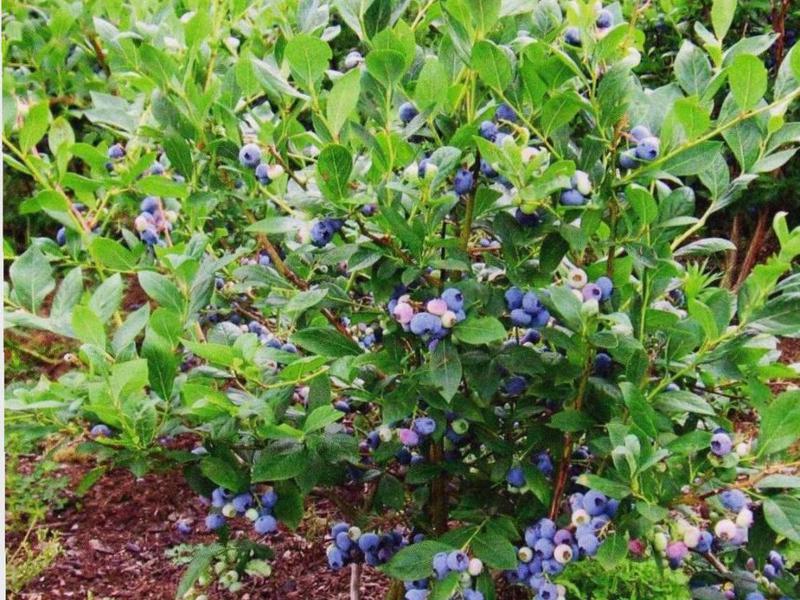
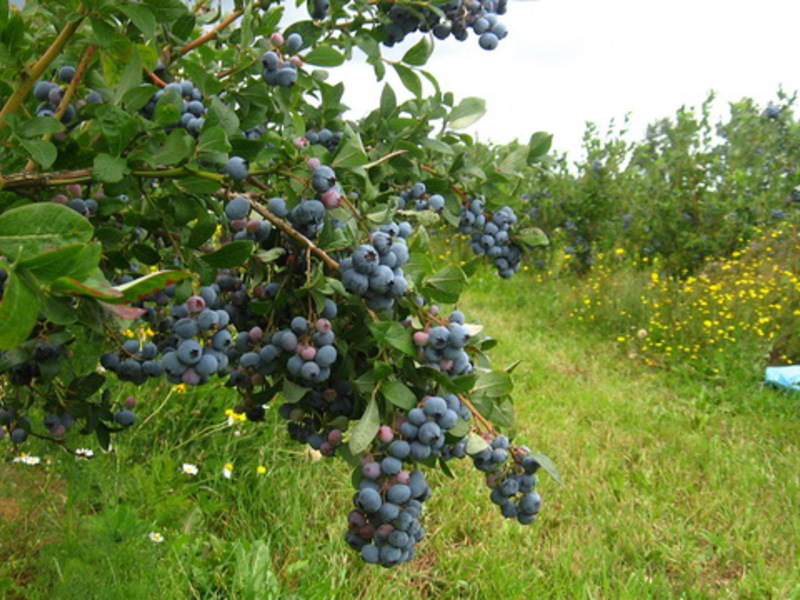
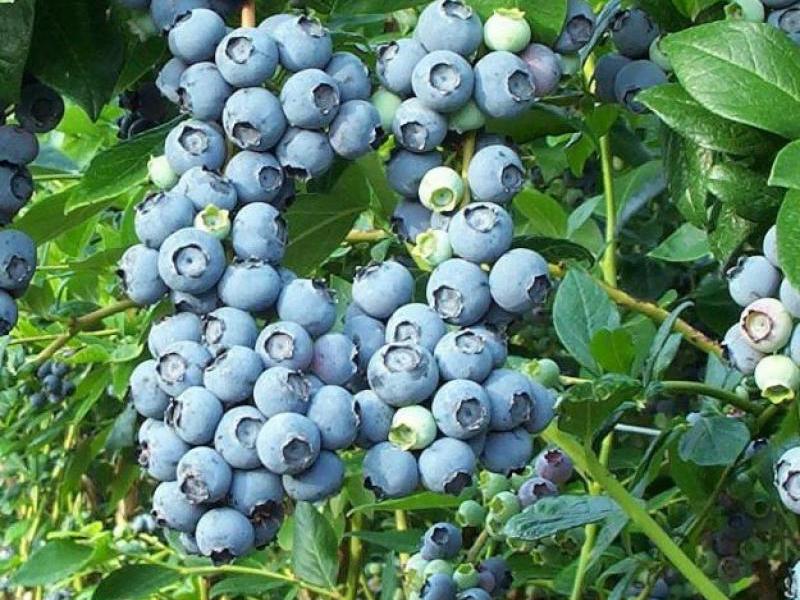
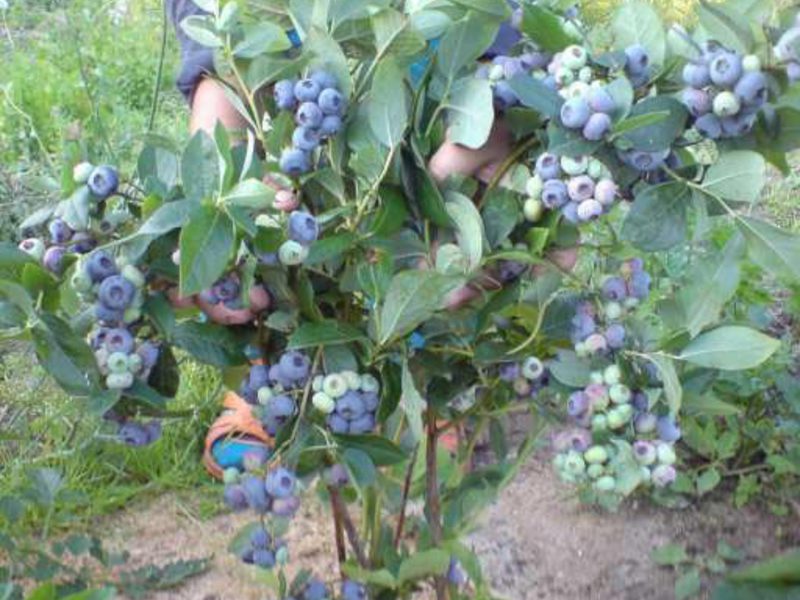
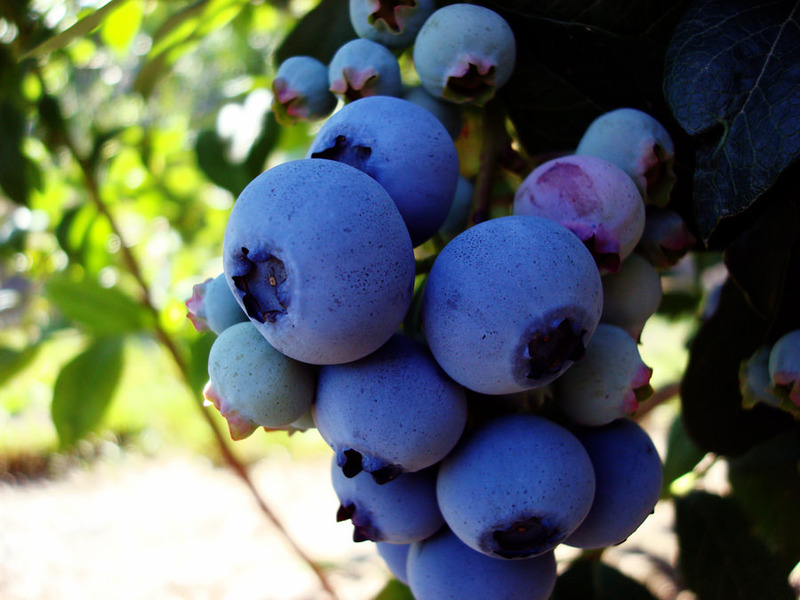
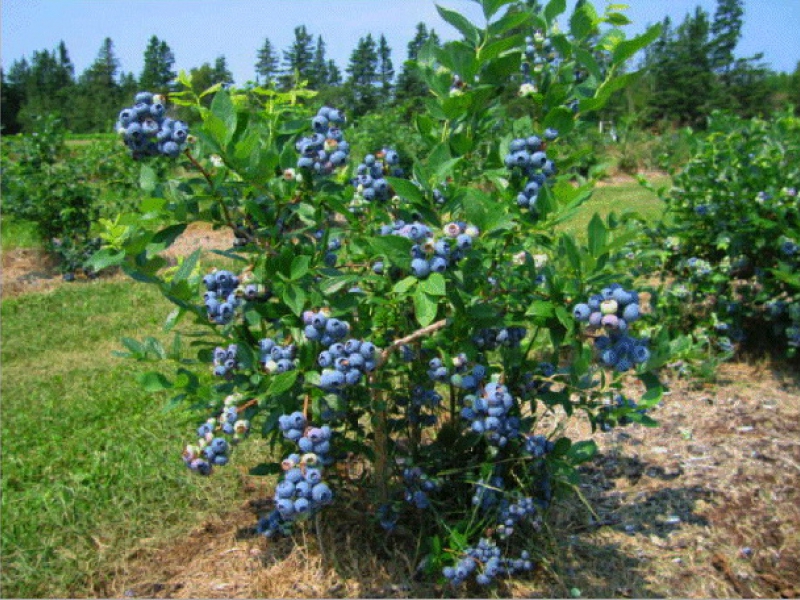

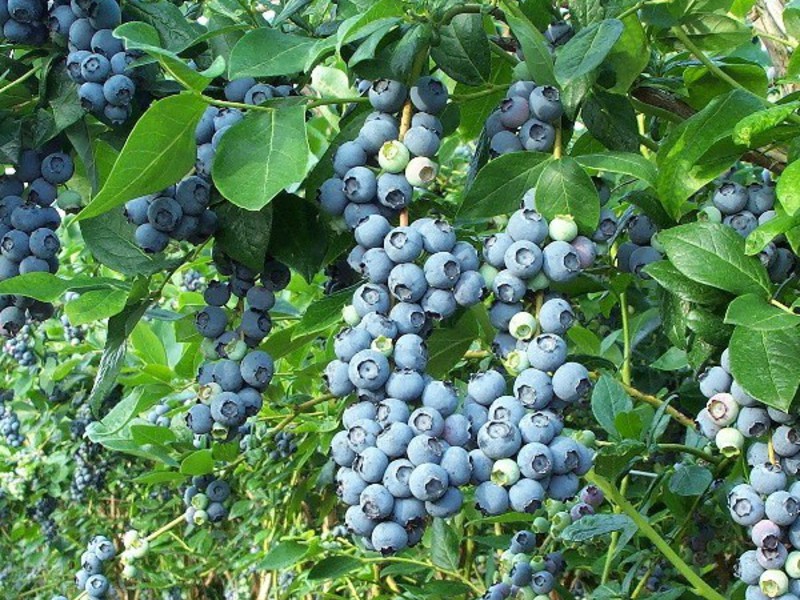
Reviews about the cultivation of garden blueberries in the Moscow region
We bought the Blue variety in the nursery, when planting, they poured a peat mixture into the planting pits (they specially brought it from the forest). Last year, the first harvest was taken - berries with a coin of 5 rubles, unrealistically tasty.
Blueberries near Moscow are real !!! I planted 5 different varieties, the berries came out fleshy, very sweet, each variety has its own taste. It cannot be compared with blueberries, much tastier. Important - NO organic matter, plant in acidic soil.
I planted only one bush and I'm very sorry, because it's not enough. I will annoy 2 more bushes next year.
